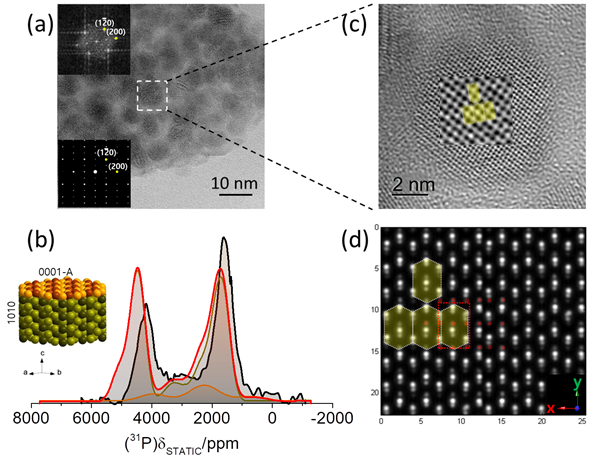ssNMR nanocrystallography
Crystal and electronic facet analysis with solid-state NMR nanocrystallography
Acquiring the crystal and electronic structure of material surfaces and interfaces is at the heart of Modern Surface Science, especially after the dawn of the era of novel 2D materials. It is also of significant importance in the study of materials related with major industrial processes such as heterogeneous catalysis and renewable energy sources. An impressive number of state-of-the-art methods ranging from Angle Resolved Photoemission Spectroscopy to Aberration Corrected HRTEM and STM have been successfully engaged in resolving the complicated issues related with the crystal and electronic structure of surfaces and nanostructured materials. However, by reducing the material size down to nanoscale, atomically resolved information is most of the time obscured, especially in the case of light elements.In a recent Nature Communications publication, we demonstrated how NMR Nanocrystallography, i.e. combination of Nuclear Magnetic Resonance (NMR) with Density Functional Theory (DFT) calculations, implemented on ultrafine Ni2P nanoparticles (down to 5nm), succeeds in a unique way to visualize at atomic scale resolution the size-induced structural and electronic changes taking place in this exceptional Hydrogen Evolution Reaction (HER) nanocatalyst.
